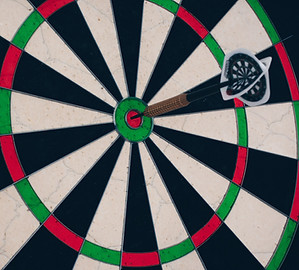Research Themes
The oral microbiota is emerging as an important driver of local and systemic inflammatory disease. Like microbial communities at other body sites, the oral microbiota comprises both commensals and pathogens (commensals with inflammatory potential that are also present in health). The balance between these taxa - and thus host susceptibility to disease - is strongly shaped by host-derived metabolites. These molecules can directly serve as nutrients for microbial growth, and depending on the host’s immune status, they can determine the outcome of polymicrobial interactions (for example, whether commensals outcompete pathogens or vice versa).

The long-term goal of the Apollo Lab is to translate host-derived metabolites into microbiota-directed therapies. To this end, we leverage an interdisciplinary approach involving bacterial genetics, genomics, animal models, immune profiling, and human samples. The disease that we primarily study is periodontitis, or inflammation of the tissues that support the teeth. This prevalent condition can result in tooth loss, and it also increases risk for a range of diseases in and outside the oral cavity, including oral cancer and heart infection. Projects in the lab fall under one of the two themes below.
Training commensals

In response to infection, the host can increase the availability of metabolites that nourish commensals. Once “trained” by inflammation-induced metabolites, commensals can in turn enhance host resistance to subsequent infection. While this phenomenon was first described in the gut, we hypothesize that it also occurs in response to inflammation at other barrier sites, such as periodontitis in the oral cavity. Current projects are focused on nitrate, a periodontitis-induced host metabolite that can elicit oral commensals by acting as an electron acceptor. We are exploring whether host and/or dietary nitrate can mitigate periodontitis by promoting commensals over pathogens.
Targeting pathogens
Unchecked inflammation can generate metabolites that favor the outgrowth of pathogens. Preventing pathogens from exploiting such metabolites may represent a more targeted approach for treating microbiota-driven diseases, in contrast to antibiotics which also kill commensals. Current projects are focused on the microbiota-derived metabolite formate, the production of which we hypothesize is stimulated by inflammation-induced hypoxia. To exploit formate, pathogens require the micronutrient selenium. Based on this, we are exploring whether depleting selenium can mitigate periodontitis by targeting pathogen formate metabolism. We are also developing an interest in defining the metabolites that pathogens exploit in the setting of oral squamous cell carcinoma.

Selected Publications
Remembrance of infections past
Stacy A
Science | 2022 | PDF
Infection trains the host for microbiota-enhanced resistance to pathogens
Stacy A†, Andrade-Oliveira V, McCulloch JA, Hild B, Oh JH, Perez-Chaparro PJ, Sim CK, Lim AI, Link VM, Enamorado M, Trinchieri G, Segre JA, Rehermann B, Belkaid Y†
†Co-corresponding author
Cell | 2021 | PDF
Lewin GR, Stacy A, Michie KL, Lamont RJ, Whiteley M
PNAS | 2019 | PDF
Defining genetic fitness determinants and creating genomic resources for an oral pathogen
Narayanan AM, Ramsey MM, Stacy A†, Whiteley M† †Co-corresponding author
Applied and Environmental Microbiology | 2017 | PDF
Co-infecting microbes dramatically alter pathogen gene essentiality during polymicrobial infection
Ibberson CB, Stacy A, Fleming D, Dees JL, Rumbaugh K, Gilmore MS, Whiteley M
Nature Microbiology | 2017 | PDF
A commensal bacterium promotes virulence of an opportunistic pathogen via cross-respiration
Stacy A, Fleming D, Lamont RJ, Rumbaugh KP, Whiteley M
mBio | 2016 | PDF
Microbial community composition impacts pathogen iron availability during polymicrobial infection
Stacy A, Abraham N, Jorth P, Whiteley M
PLOS Pathogens | 2016 | PDF
The biogeography of polymicrobial infection
Stacy A, McNally L, Darch SE, Brown SP, Whiteley M
Nature Reviews Microbiology | 2016 | PDF
Bacterial fight-and-flight responses enhance virulence in a polymicrobial infection
Stacy A, Everett J, Jorth P, Trivedi U, Rumbaugh KP, Whiteley M
PNAS | 2014 | PDF